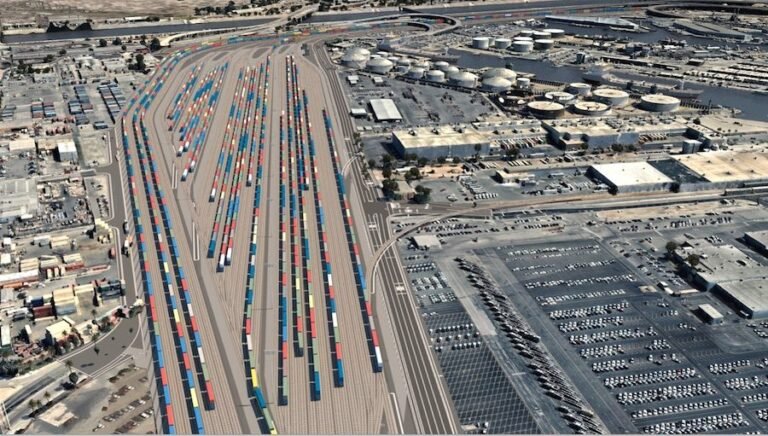
The Port of Long Beach plans to break ground on the first segment of the $1.567 million Pier B Pier Rail Support Facility this summer. The project, also called “America’s Green Gateway,” will reconfigure, expand and improve the existing rail yard at Pier B and connect directly to the pier’s rail facilities and the Alameda Corridor rail.
The new facility will double the size of Pier B’s existing rail yard from 82 to 171 acres and more than triple the volume of rail cargo at the pier that the port can handle annually, from 1.5 million equivalent units at twenty feet (TEU). ) up to 4.7 million TEU. The yard will also feature a depot to feed and service up to 30 locomotives at one time and a full-service staging area to assemble and break down trains up to 10,000 feet long.
“The need for the project is for efficiency reasons,” Mark Erickson, the port’s deputy chief engineer, said at a March 6 public information meeting. “One train can carry the equivalent of 750 freight truck trips. So our strategy at the Port of Long Beach is to strengthen our dockside rail capacity and get freight to and from the port by rail instead of of trucks”.
The port has so far received more than $643 million in grants for the project. By 2023, state and federal partners awarded $565 million to the project. The awards included $52.3 million from the US Maritime Administration’s Port Infrastructure Development (MARAD) Program, $70.4 million from the CTC’s Trade Corridor Improvement Program, $158.4 million from dollars from the CalSTA Port Cargo and Infrastructure Program and $283.4 million from the US Department of Transportation Grant Program.
HDR provides final engineering design services for the Pier B program, as well as site investigations, traffic studies, structural analyses, lighting analyzes and more.
The Port of Long Beach handles $200 billion in trade annually and supports 2.6 million jobs in the United States, including 575,000 in Southern California. In April 2022, the US Maritime Administration issued a Final Environmental Impact Statement and Record of Decision to approve the Pier B program.
Currently, about 22% of all cargo entering and leaving the port is handled by rail at the dock. The goal is to move at least 35% of cargo by rail to the dock.
By adding rail capacity to the wharf, the project will improve rail operations throughout the San Pedro Bay Port Complex. Officials say it will move more cargo with less environmental impact, mitigating traffic congestion on highways and improving air quality. The project will also help the Port meet the rail-to-dock goals set forth in the San Pedro Bay Ports Clean Air Action Plan Update 2017.
The overall project will be built in 10 segments, with full completion expected by 2032. The first work to begin is the $20.6 million east expansion project, which is currently out to tender, with a notice to proceed expected to arrive this August or September. says Erickson.
The existing rail facility at Pier B serves as a storage and train storage area and is a critical point in the Port’s rail network. The facility is primarily used by Pacific Harbor Line, which provides shipping and rail switching services. The project site in the Port District is south of 12th Street, north of Pier B Street and west of the 710 Freeway. The Port is in the process of acquiring properties in the project footprint.
Because the port was built on top of a former oil field, Erickson says one of the most challenging elements of the project is the right-of-way phase because of the amount of coordination and relocation of utilities involved. HDR works with the Port and more than 40 owners and utility agencies with more than 700 utility lines. Erickson says this work is “a big part of the cost and schedule of the project.”

